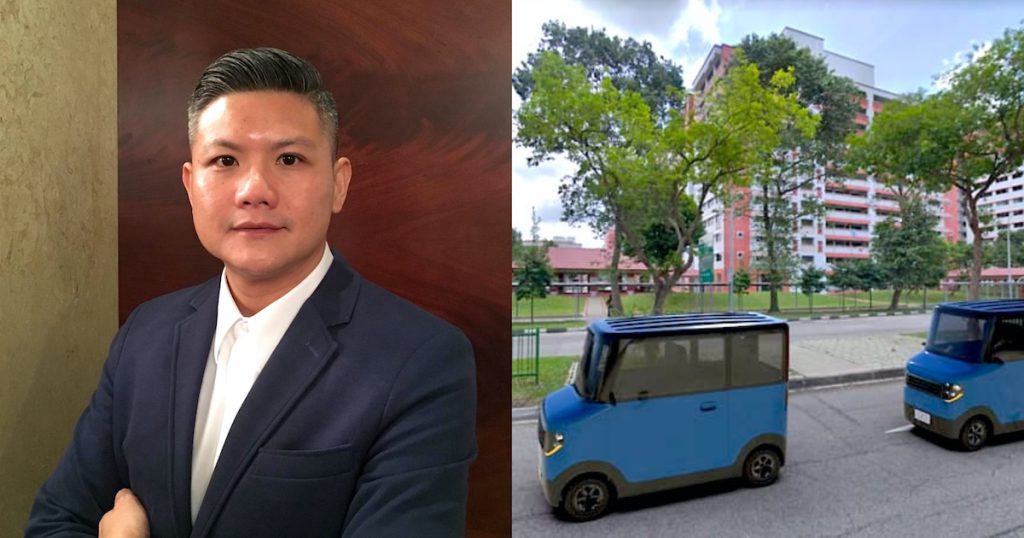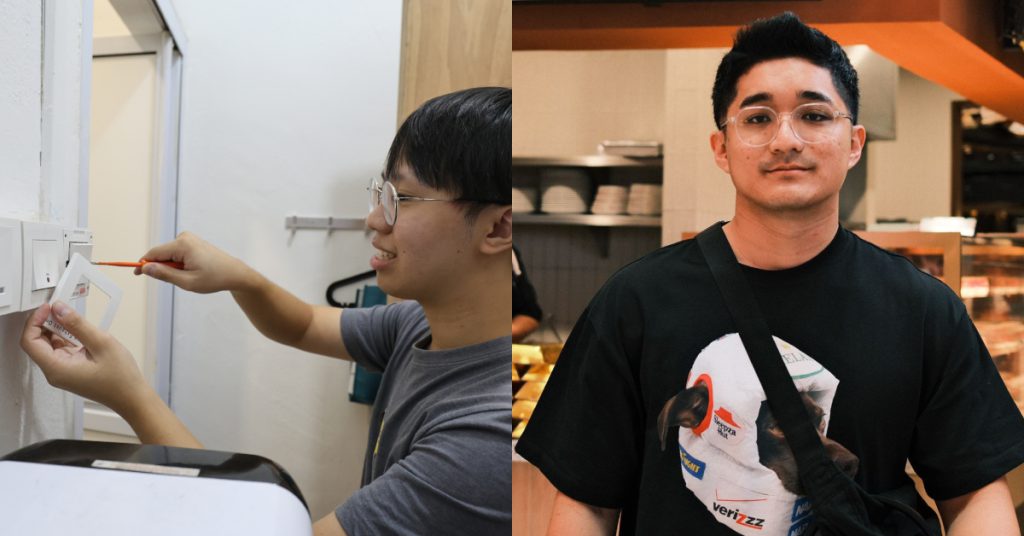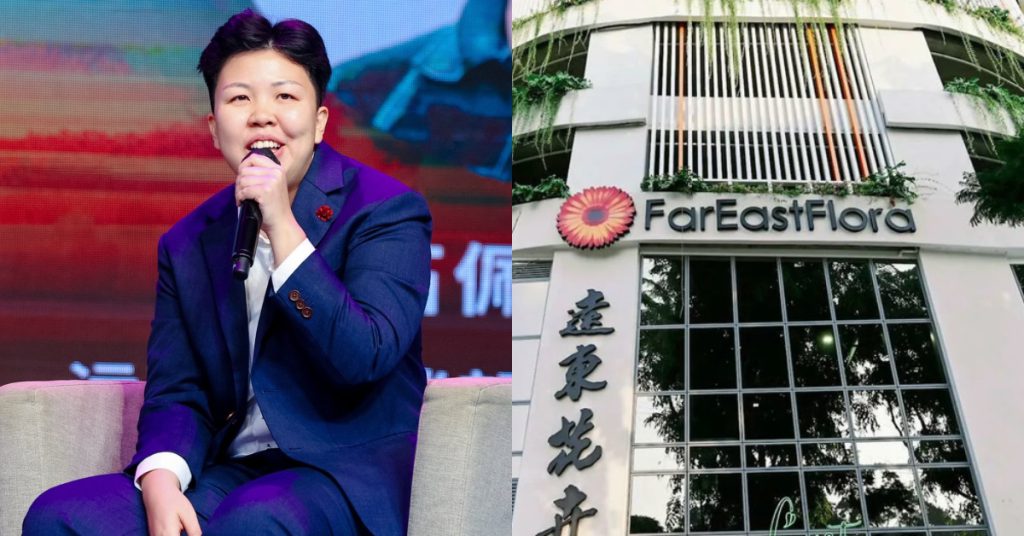Last year, homegrown electric vehicle (EV) company, QIQ Global, made headlines for its plans to roll out shared electric “microcars” rental in Singapore by 2021.
Particularly, the startup shared its plans to roll out 300 to 600 microcars in Punggol, hoping to adopt a similar business model to local electric car-sharing startup BlueSG.
Called the QIQ Pods, it can autonomously park themselves at the nearest charging stations. Riders simply have to leave their cars by the curb.
Geo-fencing, which uses GPS or radio frequency identification technology, will be used to create a virtual boundary that confines the QIQ Pods to short trips.
Renting a QIQ Pod is estimated to cost S$2 for an ad-hoc ride lasting 30 minutes. On off-peak hours, QIQ Pods will also be maximised for efficiency and can be potentially used for logistics and other purposes.
In a recent video interview with Vulcan Post over Zoom, co-founder Justin Sim reasoned that sharing is a huge part of their business model, and wants it be shared beyond just humans, or enabling people to move from point A to B. He wants it to be shared across different industries as well so that the “asset has more value”.
However, he further shared that QIQ Global is strictly in development phase now and the project is currently in “stealth mode”.
They initially wanted to launch shared electric bicycles in Singapore

QIQ Global was first started out between Ben Lim and Justin, before Dalston Pung joined in late 2017 (he has since left the company in October 2020, though he remains the shareholder).
It started out with a bicycle-sharing architecture, way before Mobike and oBike even entered the market.
When I came up with this concept, I actually wanted to do a small-scale rollout in Sentosa. We were hard at work, doing the development and building the product from the ground-up. The only problem we faced was that we didn’t have the manpower and talent, which took a long time (for us to resolve).
– Justin Sim
Unfortunately, things didn’t pan out. By the time they were ready to launch, other bike-sharing companies have already entered the space, albeit with a non-electric variant.
He went on to describe it as a “beautiful solution”, but admitted that it was a cut-throat industry, which led to the demise of several companies.
Although these bike-sharing companies have gone bust, he believes that they have helped prove that the sharing architecture model works.
“People actually enjoyed their service, especially at low prices,” he noted, adding that the main reason they failed is because of the conglomerates behind it, who started slashing prices and pushing in more products in a bid to earn the top spot in the race.
He noted the same problem in Singapore’s public transport system. Although it’s efficient and well-connected, there are still gaps — commuters often have to make compromises between convenience and affordability.
Noting how people move about and how much time they’re wasting, they set out to change the status quo and enhance mobility among Singaporeans.
According to Justin, Singapore has more than 5,000 buses, which serve the public as early as 5am till late night or the wee hours of the morning on certain days. Such long hours require a lot of manpower, which often result in a “logistical nightmare”.
With these in mind, if the government didn’t step in to offer heavy subsidies, are these companies then able to become profitable?
The same thing applies for MRTs as well. “It costs billions of dollars to build 1km of MRT track, and we have hundreds of them (islandwide), so where is the bottleneck? How much must the government to pay for us to enjoy the services?” he asked rhetorically.
These sort of questions were what prompted them to come up with an optimised system that enables them to look at transportation in a different light.
“(We wanted to) give the people the right tools, the right kind of vehicles for them to work in as and when they want, and it has to be affordable.”
They dabbled in EV back when it was still nascent
We were still very early in the (EV) stage, where Singapore looks into electrification of transportation in a very different view. The journey wasn’t an easy one — it was flagged with a lot of regulations and red tape that we have to jump through.
Singapore, being a small country, it is actually primed to lead the space of electrification. However, that wasn’t the case and governmental support wasn’t that readily available. It gave us the notion to just quit and pack up, but we stuck to our guns.
– Justin Sim

They went on to build different kinds of products from the ground up, the first of which is an electric motorcycle. He described that it was very much like a “DIY project”, which allowed him to learn how to build a product.
They eventually progressed to building different types of electric vehicles such as electric trucks and agricultural farm equipment, but 80 per cent of them actually remain as prototypes. This means that only 20 per cent of their products manage to get commercialised.
Justin attributed this low percentage to the lack of government support back in the day.
“What you need is for the large companies to actually support such a movement for these things to roll out in the hundreds. That’s when we (will) have the ability to have people view our product, and understand how these products can serve them better. So without all this, it’s actually a lot of wasting time tinkering around with components.”
With only 20 per cent of products successfully brought to market, was it then difficult to sustain the business?
“It is extremely hard, because development requires a lot of manpower. I think material-wise, it’s actually not that heavy (on us), but manpower is actually one of the most expensive or the most costly to maintain. So to have a team to stay on as development, it requires a lot of resources.”
Making EVs affordable for farmers in the region
Prior to QIQ, Justin was actually already involved in the EV space. He had started up SHADO, which builds EVs for emerging markets, together with Ben in 2014.
“Ben had a company in Laos and he was one of the first to roll out an electric golf cart taxi service,” shared Justin.
“Back in the day, he imported electric golf carts from China and then plied the roads in Laos as a taxi service, where there wasn’t a lot of these kind of services available.”
Ben later realised that farmers needed to bring their goods to the market. Since they own very small pieces of land, they couldn’t afford big trucks.
This sparked the idea to create an electric version of such a vehicle, in particular, an electric taxi.
Since made-in-China products weren’t very robust at the time, it broke down very easily. Ben later partnered with a Japanese company that provided the same kind of vehicle platform, but it broke down yet again.
Frustrated, he set out to build an electric truck to serve that need. “It wasn’t a pretty truck, it was a utility truck. It doesn’t look great, but it functioned well. But ultimately, it’s for markets like Laos and Vietnam,” said Justin.
He added that they do have plans to expand into other regional markets to cater to people who need low-cost vehicles.
In fact, we didn’t even want to sell the vehicles. We just want to lease them to farmers. For example, if they want to bring their goods from the farm to the market, which is like 10km away, they can rent our vehicle for $5 instead of owning it at $50,000.
– Justin Sim
Primarily, they are looking to maximise the utility of such vehicles instead of letting it go idle. When asked why they chose to introduce SHADO beyond domestic shores, Justin simply explained that the city-state did not have a big EV presence back then.
“In order for us to grow our road-going vehicles, it has be homologated and therefore, we didn’t start SHADO for the Singapore market, but in overseas markets.”
“However, we do build vehicles for private ownership. For example, PSA Singapore owns a big piece of land, and that kind of land don’t require vehicles to have the homologation rules that the law requires. So we do serve customers like that (in Singapore).”
Explaining the difference between his two EV companies, Justin said that QIQ Global is focused on the shared architecture, while SHADO is developing products for a very specific market.

Furthermore, QIQ offers a “one-size-fits-all” kind of solution in which they design one product for mass distribution. SHADO on the other hand, designs and builds products for a very specific market. For instance, they designed electric tuk-tuks specifically for the Indian market.
From EV to robotics
In late 2018, Ben and Justin started yet another company together. This time round, it is in the robotics space.
Called B Robotics, it builds a family of robot products that actually does logistics, security and cleaning.

The whole business proposition of B Robotics is basically to have robots being used. One of the biggest problems that we see is a manpower shortage when it comes to the serving industry, or what we call the “maid services”. So things like security guards, cleaners, logistic movers, we don’t have a lot of manpower to supply that. Often (times), we have to bring in foreign manpower, which locals are not happy about.
We actually don’t want to replace humans (with robots), but we want to upskill them so that they can reach a different stage and be able to better serve the industry with better wages as well.
– Justin Sim
He pointed out that one of the common problem with robots however, is that they will need “sleep” during charging time, which typically requires four to six hours a day.
This defeats the purpose of having a robot who can’t work round-the-clock — something a human cannot achieve — so this is where B Robotics stand out from the rest.
“Our robots can work almost 24 hours a day. Every time they work for four hours, they only take a five-minute break and then they’re ready for the next four hours,” explained Justin.
Currently, their robots are also in the testing phase with the government agencies to have multiple robots in a single place.
“Let’s take Takashimaya for example. Just imagine that there’s an array of robots inside — they have security robots, logistic robots, and cleaning robots. They are all of different brands, so how do they communicate with one another? There will (also) be a chance where one robot will collide with another, or they will all meet in an alley and get stuck.”
“This conflict resolution needs to be performed by someone. And these services need to be hosted in the cloud. So now, we are looking at an architecture that is very different. Again, we want to make sure that the robots get utilised and we don’t want to have more people helping the robots. Who is going to help a robot open a door? (Does it make better sense) to hire someone to open a door for a robot, or can the robot open the door by itself?”
These are some of the considerations that they have to take note of, and at the end of the day, they want to enable multiple robots in different places to actually co-exist together, even with humans in play.
To date, they work largely with government agencies to help build robots and autonomous vehicles (AVs), such as the Infocomm Media Development Authority, GovTech Singapore and PSA Singapore.
For PSA Singapore, they developed a “robot that does logistic works”, carrying goods from one point to another.
They are currently working with another government agency, though Justin can’t divulge further information as the project is still under wraps and will only be announced in mid-November.
When it comes to robotics, Justin strongly feels that it should be “multi-use”, shared by a lot of people and functions. Coupled with the fact that their robots can work non-stop, he finds it more feasible than spending tens of thousands on a robot that can only do one thing.
There’s a stronger EV support from the government now
The Singapore government has recently been very vocal about its support and transition towards EVs, so does this help push their business agenda in any way and present an opportunity?
“It has not provided us a business opportunity yet. However, I think there will be a lot of room (for us to grow). I really do understand the government standpoint. Ultimately, they are there to protect the people by introducing and opening up markets like this.”
“By allowing people to plug in with their technologies and products, it will actually have more damage in the long run. But what they’re trying to do so is protect the people by coming up with standards and protocols that people must follow. In a way, that provides a certain level of ‘safety net’ for people using this product. Even though it does not serve us well at the moment, I think there will be a synergy where we will be collaborating with them very closely.”
Regardless of the stronger government support now, they are still fraught with many other business challenges like manpower and financial woes.
Covid-19 has only made it more difficult for them. After all, for a company that is heavily involved in the development stage, it requires a lot of manpower in the same room, and work-from-home is simply not an ideal arrangement for them.
Justin also noted that the pandemic has also brought about a shift in investor funding. They are currently looking to grow the company, but are now faced with fundraising challenges.
In our line of work, we actually require investors and shareholders to pump in funds. When Covid-19 happened, two things will naturally (happen). Number one, (investors) will think it’s now not a good time to spend in this kind of manner. They would like to save the money and wait for a much calmer weather before they reinvest.
The other point is that they will invest into companies that are Covid-related, because that is the hot topic today. Because of that, we now face a financial situation where investors are less palatable to technologies like this.
– Justin Sim
On the other end of the spectrum, Covid-19 has posed a very unique problem for public transportation, in which there’s a higher risk of virus infection. “So there’s (an opportunity to) look into alternative transportation that is much more viable as well.”
Commenting on the EV landscape in Singapore, he feels that Singapore has great potential to move into electrification.
With Tesla shipping in its first order into Singapore about a month ago, Justin said that he already sees the strong “energy of EVs” here.
While the upfront cost of such EVs may be higher, he said that the savings in maintenance and fuel is much more affordable. “People in Singapore, who live in such a small country, should definitely embrace (EV) technology.”
Get $20 off your order on VP Label when you checkout with Pace and the code PACEVP20 (min spend $80). Discover and shop exciting homegrown brands now:
Featured Image Credit: Justin Sim via Medium / QIQ Global










